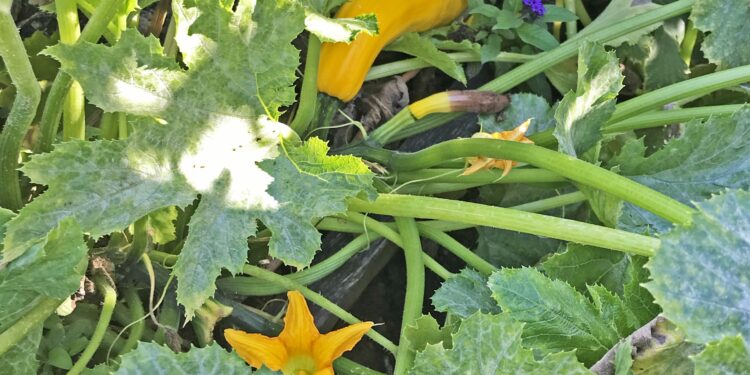The squash family of plants, including pumpkins, zucchini, melons, cucumbers and many others, are known to accumulate high levels of pollutants in their edible parts. Understanding the mechanism behind the accumulation of pollutants is crucial to creating safer products. Credit: Inui Hideyuki
Pumpkins, squash, zucchini and their relatives accumulate soil pollutants in their edible parts. A team from Kobe University has now identified the cause, making it possible to both make products safer and create plants that clean contaminated soil.
The squash family of plants, including pumpkins, zucchini, melons, cucumbers and many others, are known to accumulate high levels of pollutants in their edible parts.
Inui Hideyuki, an agricultural researcher at Kobe University, says: “The pollutants do not decompose easily and therefore pose a health risk to people who eat the fruit. Interestingly, other plants do not do this and so I was interested in why this occurs in this particular group. »
In previous studies, the Kobe University researcher and his team identified a class of proteins in the squash family that bind to pollutants, allowing them to be transported through the plant. Earlier this year, they discovered that the shape of proteins and their binding affinity to pollutants influence their accumulation in the aerial parts of plants. Their study was published in Plant physiology and biochemistry.
“However, these proteins exist in many other plants, and even among squash there are varieties that are more prone to accumulating pollutants than others. We then noticed that in varieties with high accumulation, there are higher concentrations of proteins in the sap,” explains Inui. Thus, his team was interested in the secretion of the protein transporting pollutants in plant sap.
In the same journal, the Kobe University team just published that they could show that plant protein variants with high accumulation are indeed exported in sap, while other variants are retained in cells.
They could also identify that this is likely due to a small difference in the amino acid sequence of the protein that acts as a label telling the cell which proteins to keep. The team proved their point by showing that unrelated tobacco plants into which they introduced the high-accumulating protein versions also exported the protein in the plant’s sap.
Inui explains: “Only secreted proteins can migrate inside the plant and be transported to the aerial parts. Therefore, this seems to be the distinguishing factor between low-polluting and high-polluting plant varieties.”
Understanding the mechanism behind the accumulation of pollutants is crucial to creating safer products.
“By controlling the behavior of contaminant-transporting proteins, through genetic modification of their ability to bind pollutants or their excretion in plant sap, we believe it will be possible to grow safe crops that do not accumulate harmful chemicals in their edible parts,” explains Inui.
But the Kobe University researcher has a broader vision.
He explains: “I started this research because I was looking for plants that could effectively detect and digest pollutants. Therefore, I also imagine that we could use the knowledge gained from this work to create plants that are more efficient at absorbing pollutants from the soil. This could turn into a technology for cleaning contaminated soil.
More information:
Minami Yoshida et al, Extracellular secretion of main latex-like proteins linked to the accumulation of hydrophobic pollutants dieldrin and dioxins in Cucurbita pepo, Plant physiology and biochemistry (2025). DOI: 10.1016/j.plaphy.2025.110612
Hideyuki Inui et al, The binding affinity of major latex-like proteins toward polycyclic aromatic hydrocarbons influences their aerial accumulation in the Cucurbitaceae family, Plant physiology and biochemistry (2025). DOI: 10.1016/j.plaphy.2025.110280
Provided by Kobe University
Quote: Delicate Treats: Why Pumpkins Accumulate Pollutants (October 30, 2025) retrieved October 30, 2025 from
This document is subject to copyright. Except for fair use for private study or research purposes, no part may be reproduced without written permission. The content is provided for informational purposes only.



